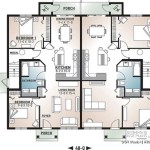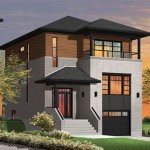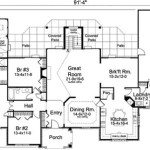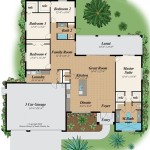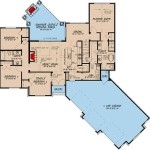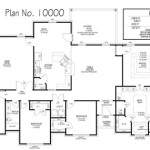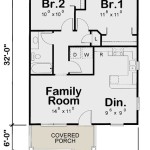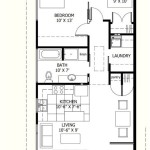House Plans for View Lots: Maximizing Scenery and Value
Designing a home for a view lot presents unique opportunities and challenges. Unlike standard flat parcels, view lots often feature irregular topography, demanding careful consideration of how the house interacts with the land. Successful house plans for these properties prioritize maximizing the scenic panorama, optimizing natural light, and ensuring structural stability on potentially sloped ground. The goal is to create a dwelling that not only offers breathtaking views but also harmonizes with the surrounding environment.
The inherent value of a view lot lies in its potential for spectacular scenery. Therefore, design choices should be geared towards capturing and framing these vistas from multiple points within the house. This includes strategically positioning rooms, selecting appropriate window sizes and styles, and incorporating outdoor living spaces that seamlessly blend indoor and outdoor experiences.
Beyond aesthetics, practical aspects such as site access, drainage, and soil stability require meticulous planning. A well-designed house plan for a view lot integrates these technical considerations with the homeowner's aesthetic preferences and functional needs.
Optimizing View Orientation and Window Placement
One of the foremost considerations in designing for a view lot is optimizing the orientation of the house to capitalize on the available views. This involves a thorough site analysis to determine the direction and quality of the view, prevailing wind patterns, and sun exposure. The primary living areas, such as the great room, kitchen, and master bedroom, should ideally be positioned to capture the most desirable vistas. This might involve orienting the house along a specific axis or creating a multi-level design to take advantage of different view angles.
Window placement plays a crucial role in framing the view and maximizing natural light. Large windows, such as picture windows or floor-to-ceiling glass, can create a dramatic effect, blurring the lines between indoor and outdoor spaces. However, it's essential to consider energy efficiency and potential glare or heat gain, especially in areas with strong sunlight. Strategic placement of smaller windows can provide targeted views while minimizing these negative effects. The type of window is also important. For example, casement windows allow for unobstructed views when open, while awning windows can provide ventilation even during light rain.
Furthermore, the window's framing and materials can contribute to the overall aesthetic. Dark frames can create a strong contrast with the surrounding landscape, drawing the eye outwards, while lighter frames can blend seamlessly with the interior décor. The choice of glass is equally important. Low-emissivity (Low-E) glass can reduce heat transfer, while tinted glass can help to minimize glare and UV exposure.
Beyond the positioning and size of windows, consider the relationship between the interior spaces and the exterior landscape. Balconies, decks, and patios can extend the living space outdoors, providing unobstructed views and opportunities for outdoor dining and relaxation. These outdoor areas should be carefully integrated into the overall design, with attention paid to privacy, weather protection, and accessibility.
Consider the use of glazed walls or doors to create a seamless transition between the interior and exterior spaces. These features can provide expansive views and allow natural light to flood the interior, creating a bright and airy atmosphere. The incorporation of skylights can also bring natural light into areas that might otherwise be dark or inaccessible, such as interior hallways or bathrooms.
Addressing Topographical Challenges and Structural Considerations
View lots often present topographical challenges, such as steep slopes, uneven terrain, and unstable soil conditions. These factors must be carefully addressed during the design and construction phases to ensure the structural integrity of the house and its long-term stability. A thorough geotechnical investigation is essential to assess the soil composition, bearing capacity, and potential for landslides or erosion.
Depending on the severity of the slope, various foundation options may be considered. A slab-on-grade foundation is typically suitable for relatively flat lots, while a crawl space or basement foundation can provide additional support and access to utilities on slightly sloped sites. For more challenging terrain, a pier and beam foundation or a stepped foundation may be necessary to create a level building platform.
Retaining walls may be required to stabilize slopes and prevent erosion. These walls can be constructed from a variety of materials, such as concrete, stone, or timber, and should be designed to blend seamlessly with the surrounding landscape. Proper drainage is also crucial to prevent water from accumulating behind retaining walls and causing structural damage.
Beyond the foundation and retaining walls, the overall structural design of the house must take into account the potential for wind loads, seismic activity, and snow loads, depending on the location. Shear walls, bracing, and other structural elements may be necessary to provide adequate resistance to these forces. A qualified structural engineer should be consulted to ensure that the house is designed to meet all applicable building codes and safety standards.
In addition to structural considerations, accessibility can be a significant challenge on view lots. Steep driveways and multiple levels may make it difficult for people with mobility issues to navigate the property. Ramps, elevators, and other accessibility features should be incorporated into the design to ensure that the house is accessible to all.
The construction process on a view lot can also be more complex and time-consuming than on a flat lot. Specialized equipment and techniques may be required to excavate the site, pour the foundation, and erect the framing. Careful planning and coordination are essential to minimize disruption to the surrounding environment and ensure the safety of workers.
Integrating Outdoor Living Spaces and Landscaping
A well-designed view lot home seamlessly integrates indoor and outdoor living spaces, creating a harmonious connection with the surrounding landscape. Outdoor areas such as decks, patios, and balconies should be strategically positioned to capture the best views and provide comfortable spaces for relaxation and entertainment. The design should consider the orientation of these spaces relative to the sun and wind, as well as privacy from neighbors.
The choice of materials for outdoor living spaces should complement the architectural style of the house and the natural environment. Natural materials such as wood, stone, and brick can create a warm and inviting atmosphere. Durable, weather-resistant materials are essential to withstand the elements and minimize maintenance.
Landscaping plays a critical role in enhancing the aesthetic appeal of a view lot home and integrating it into the surrounding landscape. Native plants are often the best choice, as they are well-adapted to the local climate and require less water and maintenance. The landscaping should be designed to frame the view, provide privacy, and create a sense of connection with nature.
Consider incorporating features such as outdoor kitchens, fireplaces, and water features to create inviting and functional outdoor living spaces. Outdoor lighting can extend the usability of these spaces into the evening hours and enhance the visual appeal of the property.
The design of the landscaping should also take into account the potential for erosion and runoff. Terracing, retaining walls, and proper drainage can help to stabilize slopes and prevent soil erosion. Permeable paving materials can reduce runoff and allow rainwater to infiltrate the soil.
Furthermore, consider the impact of the landscaping on the view. Trees and shrubs should be carefully positioned to frame the view without obstructing it. Low-growing plants can be used to soften the edges of the property and create a sense of enclosure.
Finally, consider the integration of sustainable design principles into the landscaping. Xeriscaping, which involves using drought-tolerant plants and efficient irrigation techniques, can significantly reduce water consumption. Composting and mulching can improve soil health and reduce waste. By incorporating these sustainable practices, you can create a beautiful and environmentally friendly landscape.

Great For The Rear View Lot 35440gh Architectural Designs House Plans
House Plans For View Lots From Visbeen Architects Builder

Modern Narrow House Plan View Park Beach Plans Designs

Modern House Plan Sloping Lot Contemporary Style 5590 Vista
House Plans For View Lots From Visbeen Architects Builder

20 House Plans With Lofts Tiny Small Luxury Designs Blog Homeplans Com

Home Plans With Lots Of Windows For Great Views

It Is Common To Find Expansive Patios Decks Or Walkout Basements In View Lot House Plans These Are Seamlessly Connected Basement Design
House Plans For View Lots From Visbeen Architects Builder

Plan 056h 0005 The House

